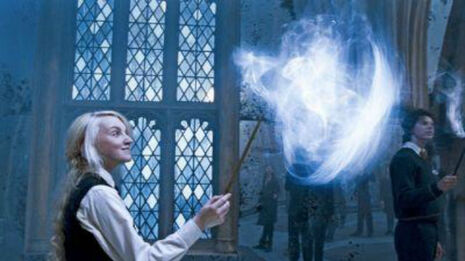Paul J. Franklin: ‘You’d spend all day thinking, “What does a stupefy spell look like?”’
Shedding light on Pensieves, Patronuses, and physics, Lillian Crawford talks to the man behind the visual effects of films including Harry Potter and Interstellar

Following his talk at the Watersprite Film Festival, I sit down with BAFTA and Oscar-winning visual effects supervisor, Paul J Franklin, to discuss his work. For those who are not aware of the difference between special and visual effects, the former, crudely put, are the physical set-ups, such as pyrotechnics, while the latter refers to the capturing of additional imagery to build on or manipulate a shot. It is this form of design that Franklin specialises in, and I was curious to know how he approaches the different genres he has created effects for.
Decidedly taking fantasy as his first example, Franklin tells me his team at Double Negative Visual Effects, which he founded in 1998, were responsible for all the wizardry audiences saw on screen in the fifth and sixth Harry Potter films. “You’d spend all day ‘What does a stupefy spell look like?’” To do this, he claims, a belief in magic was an essential part of the job. Recalling the Dumbledore’s Army scenes, he says that, when creating the spell ‘reducto’, they mistakenly shrunk down the Death Eater dummy instead of blasting to bits. “But [Director] David Yates said:“It’s a really funny shot, and it’s great to have a moment of humour.” So, we sent the shot off to [author] Jo Rowling, and she came up with a new spell, diminuendo, to drive that moment in the film.” When David Yates gets behind you, anything seems to be possible.
“Without the work of people like Franklin, these stories would never be able to told in the way they are”
Delving further into the Potterverse, I enquire about the Pensieve, through which wizards can see their memories, for his team altered its aesthetic from that seen in The Goblet of Fire. Franklin describes this as “technically incredibly challenging because we had to simulate all the movement of the fluids, the ink inside the water with the physics simulation that took forever. You’d make one tiny little change and it would be a week before you saw the results, and it wouldn’t turn out the way you thought it would”. He also reimagined the look of the Dementor-repelling Patronus Charm from its first appearance in The Prisoner of Azkaban. “There was going to be a big scene when they all cast their Patronus charms to ward off the Death Eaters, and that ended up being cut just before we started work on it, which was a shame. They sort of used it in the eighth movie for the big shield they created over Hogwarts.”
Perhaps Franklin is best known for his collaboration with Christopher Nolan, director of The Dark Knight trilogy and Inception, as well as Interstellar. Contrasting his work in fantasy with this space odyssey, he recalls the excitement of having physicist Kip Thorne onboard as executive producer to bring the most outlandish concepts of astrophysics to life. With little CGI used in the film, Nolan preferred using physical sets and miniatures with projection technology. This includes (*SPOILER ALERT*) the tesseract Matthew McConaughey enters at the end of the film, which, Franklin says, was particularly difficult as it required him to both visualise time as a physical dimension, while also to “maintain the emotional proximity between Matthew McConaughey’s character and his daughter, Murph, played by Mackenzie Foy.” Perhaps the film’s power came from this balance of breath-taking science and human sensitivity, conveyed through these visual effects.
Without the work of people like Franklin, these stories would never be able to told in the way they are, and reminds us of the importance of those behind the screen, as well as those we see on it
 News / Caius mourns its tree-mendous loss23 December 2025
News / Caius mourns its tree-mendous loss23 December 2025 Comment / Yes, I’m brown – but I have more important things to say22 December 2025
Comment / Yes, I’m brown – but I have more important things to say22 December 2025 Interviews / Politics, your own way: Tilly Middlehurst on speaking out21 December 2025
Interviews / Politics, your own way: Tilly Middlehurst on speaking out21 December 2025 News / King appoints Peterhouse chaplain to Westminster Abbey22 December 2025
News / King appoints Peterhouse chaplain to Westminster Abbey22 December 2025 News / Clare Hall spent over £500k opposing busway 24 December 2025
News / Clare Hall spent over £500k opposing busway 24 December 2025








